
Operator's manual
Floor saw
BFS
735, 940, 1345, 1350
Model BFS
Document
5100041928
Issue 07.2017
Version
03
Language en

2 100_0000_0001.fm
Copyright © 2017 Wacker Neuson Produktion GmbH & Co. KG
Printed in Germany
All rights are reserved, in particular the world-wide applicable copyright, right of duplication and right of
distribution.
This document may only be used by the recipient for the intended purpose. The document may not be
reproduced entirely or partially, or translated into any other language.
Reproduction or translation, even extracts thereof, only with written approval of Wacker Neuson
Produktion GmbH & Co. KG.
Any breach of the statutory provisions, in particular the protection of copyright, will lead to civil and
criminal prosecution.
Wacker Neuson Produktion GmbH & Co. KGis constantly working on the improvement of its products as
part of the technical further development. Therefore, we reserve the right to make changes to the
illustrations and descriptions in this documentation without incurring any obligation to make changes to
machines already delivered.
Errors excepted.
The machine on the cover may have special equipment (options).
Manufacturer
Wacker Neuson Produktion GmbH & Co. KG
Wackerstraße 6
D-85084 Reichertshofen
www.wackerneuson.com
Tel.: +4984533403200
E-Mail: service-[email protected]
Original operator's manual

Table of Contents
5100036305IVZ.fm 3
1 Preface ....................................................................................................................................5
2 Introduction ............................................................................................................................6
2.1 Using the manual......................................................................................................................... 6
2.2 Storage location of the manual.................................................................................................... 6
2.3 Accident prevention regulations................................................................................................... 6
2.4 More information.......................................................................................................................... 6
2.5 Target group................................................................................................................................ 6
2.6 Explanation of symbols................................................................................................................ 6
2.7 Wacker Neuson Contact partner ................................................................................................. 7
2.8 Disclaimer.................................................................................................................................... 7
2.9 Product identification of the machine........................................................................................... 7
3 Safety ......................................................................................................................................8
3.1 Principle....................................................................................................................................... 8
3.2 Qualification of the operating personnel.................................................................................... 11
3.3 Protective gear........................................................................................................................... 11
3.4 Transport ................................................................................................................................... 12
3.5 Operating safety ........................................................................................................................ 13
3.6 Safety during the operation of combustion engines................................................................... 15
3.7 Safety during floor saw operation.............................................................................................. 17
3.8 Maintenance.............................................................................................................................. 19
3.9 Safety devices ........................................................................................................................... 20
4 Safety and information labels ............................................................................................22
5 Scope of delivery .................................................................................................................23
6 Description ...........................................................................................................................23
6.1 Application................................................................................................................................. 23
6.2 Maximum permissible tilt ........................................................................................................... 23
6.3 Functional description............................................................................................................... 23
6.4 General instructions for use for diamond-edged cutting blades ................................................ 24
7 Transport to the worksite ...................................................................................................25
8 Operation ..............................................................................................................................26
8.1 Adjusting the handle.................................................................................................................. 26
8.2 Adjusting the guide wheel.......................................................................................................... 26
8.3 Cutting depth setting.................................................................................................................. 27
8.4 Water tank ................................................................................................................................. 27
8.5 Parking brake............................................................................................................................. 28
8.6 Assembling the cutting blade..................................................................................................... 28
8.7 Disassembling the cutting blade............................................................................................... 29
8.8 Checking the motor before starting............................................................................................ 29
8.9 Starting the engine .................................................................................................................... 30
8.10 Operating the engine................................................................................................................. 31
8.11 Turning off the engine................................................................................................................ 32
9 Maintenance .........................................................................................................................33
9.1 Maintenance schedule............................................................................................................... 33
9.2 Checking engine oil level........................................................................................................... 33
9.3 Changing the engine oil............................................................................................................. 34
9.4 Cleaning the air cleaner............................................................................................................. 34
9.5 Cleaning the filter cup................................................................................................................ 35
9.6 Idle setting ................................................................................................................................. 35
9.7 Tightening the belt..................................................................................................................... 36
9.8 Changing the belt ...................................................................................................................... 37
9.9 Checking the spark plug............................................................................................................ 38
Inhalt

Table of contents
4 5100036305IVZ.fm
10 Accessories .........................................................................................................................39
10.1 Parking brake............................................................................................................................. 39
11 Troubleshooting ..................................................................................................................41
12 Technical data .....................................................................................................................42
12.1 BFS735...................................................................................................................................... 42
12.2 BFS940...................................................................................................................................... 43
12.3 BFS1345.................................................................................................................................... 44
12.4 BFS1350.................................................................................................................................... 45
12.5 Combustion engine.................................................................................................................... 46
13 Emission control systems information and warranty ......................................................47
EC declaration of conformity
.....................................................................................48
DIN EN ISO 9001 certificate . . . . . . . . . . . . . . . . . . . . . . . . . . . . . . . . . . . . . . . . . .31

1 Preface
100_0000_0002.fm 5
1 Preface
This operator's manual contains important information and procedures for the safe, proper and economic
operation of this Wacker Neuson machine. Carefully reading, understanding and observing is an aid to
avoiding hazards, repair costs and downtime, and therefore to increasing the availability and service life
of the machine.
This operator's manual is not a manual for extensive maintenance or repair work. Such work should be
carried out by Wacker Neuson service or by technically trained personnel. The Wacker Neuson machine
should be operated and maintained in accordance with this operator's manual. An improper operation or
improper maintenance can pose dangers. Therefore, the operator's manual should be constantly
available at the location of the machine.
Defective machine parts must be exchanged immediately!
If you have any questions concerning the operation or maintenance, a Wacker Neuson contact person
is always available.

2 Introduction
6 100_0000_0013.fm
2Introduction
2.1 Using the manual
This manual is to be considered part of the machine and should be carefully stored during the entire
service life of the machine. This manual shall be transferred to subsequent owners or users of the
machine.
2.2 Storage location of the manual
This manual is part of the machine and must be kept in the immediate vicinity of the machine and made
accessible to staff at all times.
If this manual is lost, or if a second copy is required, there are two options to obtain a replacement:
Download from the Internet www.wackerneuson.com
Contact your Wacker Neuson contact partner.
2.3 Accident prevention regulations
In addition to the notes and safety instructions in this manual, the local accident prevention regulations
as well as the national health and safety regulations apply.
2.4 More information
This manual applies to various machine types from one product series. For this reason, some figures
may vary slightly in appearance from the machine purchased. Depending on the model, there may be
descriptions of components that are not included in the standard package.
The information contained in this manual is based on machines manufactured up to the time of printing.
Wacker Neuson reserves the right to change this information.
The manufacturer shall immediately include any modifications or additions in this manual.
2.5 Target group
Individuals working with this machine must be regularly trained on the dangers of handling the machine.
This operator's manual is intended for the following persons:
Operating personnel:
These individuals have been trained on the machine and informed about the possible dangers in the
event of improper conduct.
Technically trained personnel:
These people have professional training as well as additional knowledge and experience. They are able
to assess the tasks assigned to them and recognize possible dangers.
2.6 Explanation of symbols
This manual contains specially emphasized safety instructions in the following categories: DANGER,
WARNING, CAUTION and NOTICE.
Before performing any work on or with this machine, the notes and safety instructions must be read and
understood. All notes and safety instructions in this manual must be passed on to the maintenance,
repair, and transport personnel.
DANGER
This combination of symbol and signal word indicates a hazardous situation that will lead
to death or serious injury if it is not avoided.
WARNING
This combination of symbol and signal word indicates a hazardous situation that can lead
to death or serious injury if it is not avoided.
CAUTION
This combination of symbol and signal word indicates a hazardous situation that can lead
to minor injury or damage to the machine if it is not avoided.

2 Introduction
100_0000_0013.fm 7
2.7 Wacker Neuson Contact partner
Depending on the country, the Wacker Neuson contact partner is a Wacker Neuson service department,
a Wacker Neuson affiliate, or a Wacker Neuson dealer.
On the Internet at www.wackerneuson.com.
The manufacturer's address can be found at the beginning of this manual.
2.8 Disclaimer
For the following violations, Wacker Neuson dismisses any liability for personal injury or material
damage:
Failure to follow this manual.
Unintended use.
Deployment of untrained personnel.
Using non-approved spare parts and accessories.
Improper handling.
Structural modifications of any kind.
Failure to observe the "General Terms and Conditions" (GT&Cs).
2.9 Product identification of the machine
Data of the nameplate
The nameplate contains information that uniquely identifies this machine. This information is required for
ordering spare parts and when inquiring about technical issues.
Enter information about the machine in the following table:
NOTICE
Supplementary information.
Designation Your information
Group and model
Year of manufacture
Serial number
Version no.
Item number

3 Safety
8 100_0304_si_0002.fm
3 Safety
3.1 Principle
State of the art
This machine has been constructed with state-of-the-art technology according to
the recognized rules of safety. Nevertheless, when used improperly, dangers to the
life and limb of the operator or to third persons or damage to the machine or other
materials cannot be excluded.
State of the art
This machine has been constructed with state-of-the-art technology according to
the recognized rules of safety. Nevertheless, when used improperly, dangers to
the life and limb of the operator or to third persons or damage to the machine or
other materials cannot be excluded.
Proper use
The machine must only be used for the following purposes:
Cutting expansion joints in concrete, asphalt and screed.
Cutting out damaged areas of concrete and asphalt.
Straightening blacktops and concrete surfaces.
Sawing off precast concrete parts.
The machine may only be used with cutting blades that are intended for use with
the machine and the material to be cut.
The machine may not be used for the following purposes:
Cutting wood.
Cutting plastics.
Cutting materials that contain asbestos.
The machine may not be operated with blades, knives, brushes, etc.
Its proper use also includes the observance of all instructions contained in this
operator's manual as well as complying with the required service and
maintenance instructions.
Any other use is regarded as improper. Any damage resulting from improper use
will void the warranty and the liability on behalf of the manufacturer. The operator
assumes full responsibility.
Structural modifications
Never attempt to modify the machine without the written permission of the manufac-
turer. To do so will endanger your safety and the safety of other people! In addition,
this will void the warranty and the liability on behalf of the manufacturer.
Especially the following are cases of structural modifications:
Opening the machine and the permanent removal of components from Wacker
Neuson.

3 Safety
100_0304_si_0002.fm 9
Installing new components which are not from Wacker Neuson and not equiva-
lent to the original parts in design and quality.
Installation of accessories which are not from Wacker Neuson.
Spare parts or accessories from Wacker Neuson can be safely assembled or
mounted. On the Internet at www.wackerneuson.com
Please refer to the installation regulations in this operator's manual.
Requirements for operation
The ability to operate the machine safely requires:
Proper transport, storage and setup.
Careful operation.
Careful service and maintenance.
Operation
Operate the machine only as intended and only when in proper working condition.
Operate the machine in a safety-conscious manner with all safety devices attached
and enabled. Do not modify or disable any safety devices.
Before starting operation, check that all control and safety devices are functioning
properly.
Never operate the machine in a potentially explosive environment.
Supervision
Never leave the machine running unattended!
Maintenance
Regular maintenance work is required in order for the machine to operate properly
and reliably over time. Failure to perform adequate maintenance reduces the safety
of the machine.
Strictly observe the prescribed maintenance intervals.
Do not use the machine if it requires maintenance or repairs.
Malfunctions
If you detect a malfunction, you must shut down and secure the machine immedi-
ately.
Eliminate the malfunctions that impair safety immediately!
Have damaged or defective components replaced immediately!
For further information, refer to chapter Troubleshooting.
Spare parts, accessories
Use only spare parts from Wacker Neuson or such that are equivalent to the original
parts in design and quality.
Only use accessories from Wacker Neuson.
Non-compliance will exempt the manufacturer from all liability.

3 Safety
10 100_0304_si_0002.fm
Exclusion of liability
Wacker Neuson will refuse to accept liability for injuries to persons or for damage to
materials in the following cases:
Structural modifications.
Improper use.
Failure to comply with this operator's manual.
Improper handling.
Using of spare parts which are not from Wacker Neuson and not equivalent to
the original parts in design and quality.
Using of accessories which are not from Wacker Neuson.
Operator's manual
Always keep the operator's manual near the machine or near the worksite for quick
reference.
If you have misplaced the operator's manual or require an additional copy, contact
your Wacker Neuson representative or download the operator's manual from the In-
ternet (www.wackerneuson.com).
Always hand over this operator's manual to other operators or to the future owner
of the machine.
Country-specific regulations
Observe the country-specific regulations, standards and guidelines in reference to
accident prevention and environmental safety, for example those pertaining to haz-
ardous materials and wearing protective gear.
Complement the operator's manual with additional instructions taking into account
the operational, regulatory, national or generally applicable safety guidelines.
Operator's controls
Always keep the operator's controls of the machine dry, clean and free of oil or
grease.
Operating elements such as ON/OFF switch, throttle levers etc. may not be locked,
manipulated or changed without authorization.
Checking for signs of damage
Inspect the machine when it is switched off for any signs of damage at least once
per work shift.
Do not operate the machine if there is visible damage or defects.
Have any damage or defects eliminated immediately.

3 Safety
100_0304_si_0002.fm 11
3.2 Qualification of the operating personnel
Operator qualifications
Only trained personnel are permitted to start and operate the machine. The follow-
ing rules also apply:
You are at least 18 years of age.
You are physically and mentally fit.
You have received instruction on how to independently operate the machine.
You have received instruction in the proper use of the machine.
You are familiar with required safety devices.
You are authorized to start machines and systems in accordance with the stan-
dards governing safety.
Your company or the operator has assigned you to work independently with this
machine.
Incorrect operation
Incorrect operation or misuse by untrained personnel can endanger the health and
safety of the operator or third persons and also cause machine and material dam-
age.
Operating company responsibilities
The operating company must make the operator's manual available to the operator
and ensure that the operator has read and understood it.
Work recommendations
Please observe the recommendations below:
Work only if you are in a good physical condition.
Work attentively, particularly as you finish.
Do not operate the machine when you are tired.
Carry out all work calmly, circumspectly and carefully.
Never operate the machine under the influence of alcohol, drugs or medication.
This can impair your vision, reactions and your judgment.
Work in a manner that does not endanger others.
Ensure that no persons or animals are within the danger zone.
3.3 Protective gear
Work clothing
Clothing should be appropriate, i.e. should be close-fitting but not restrict your
movement.
When on construction sites, do not wear long hair loosely, loose clothing or jewelry
including rings. These objects can easily get caught or be drawn in by moving ma-
chine parts.
Only wear clothing made of material that is not easily flammable.

3 Safety
12 100_0304_si_0002.fm
Personal protective gear
Wear personal protective gear to avoid injuries or health hazards:
Non-skid, hard-toed shoes.
Work gloves made of durable material.
Overalls made of durable material.
Hard hat.
Ear protection.
Face protection.
Eye protection.
Breathing protection in the case of dusty ambient air.
Ear protection
This machine generates noise that exceeds the country-specific permissible noise
levels (individual rating level). It may therefore be necessary to wear ear protection.
You can find the exact value in the chapter Technical Data.
When wearing ear protection while working, you must pay attention and exercise
caution because your hearing is limited, e.g. in case someone screams or a signal
tone sounds.
Wacker Neuson recommends that you always wear ear protection.
Breathing protection
If a lot of dust is produced when cutting, always wear suitable breathing protection.
Use the water supply.
Provision of fire extinguishers
Ensure that a fire extinguisher is always to hand on the worksite.
Do not exceed the daily usage limit
The machine generates noise.
Observe the regulations which apply in your country and guidelines concerning the
maximum daily service life of the machine.
Always wear the prescribed safety clothing.
Information about the noise levels produced by the machine can be found in the
Technical Data chapter.
3.4 Transport
Switching off the machine
Before you transport the machine, it must be switched off, and the engine must be
given sufficient time to cool down.
Emptying the tank
Wacker Neuson recommends emptying the fuel tank before transport. Fuel could
run out, e.g. if the machine is tilted.
Observe the national safety guidelines and the hazardous materials regulations that
apply to the respective means of transportation.

3 Safety
100_0304_si_0002.fm 13
Lifting
When lifting the machine, observe the following instructions:
Designate a skilled person to guide you for the lifting procedure.
You must be able to see or hear this person.
Use only suitable and certified hoisting gear, lifting tackle and load-bearing
equipment with sufficient lifting capacities.
Only use the attachment points described in the operator's manual.
Attach the machine securely to the hoisting gear.
Ensure that no one is nearby or under the machine.
Do not climb onto the machine.
Check the lifting strap on the machine for wear and damage.
Before lifting, secure (loose) components with the relevant devices.
Remove (loose) components before lifting.
Remove the tool before lifting.
Loading the machine
Loading ramps must be able to bear the load and be in a stable position.
Make sure that no one can be endangered if the machine slips away or tips over or
if machine parts suddenly move upward or downward.
Put the operating controls and moving parts in their transport position.
Secure the machine with load-securing straps so that it cannot tip over, fall down or
slide away. Only use the attachment points described in the operator's manual.
Transport vehicle
Use only suitable transport vehicles with sufficient load-carrying capacity and suit-
able tie-down lugs.
Transporting the machine
Secure the machine on the transport device against tilting, falling or slipping.
Only use the lashing points listed in the operating instructions.
Also observe the country-specific regulations, standards and guidelines.
Restarting
Machines, machine parts, accessories or tools that were detached for transport pur-
poses must be re-mounted and fastened before restarting.
Only operate in accordance with the operating instructions.
3.5 Operating safety
Explosible environment
Never operate the machine in a potentially explosive environment.

3 Safety
14 100_0304_si_0002.fm
Work environment
Familiarize yourself with your work environment before you start work. This includes
e.g. the following items:
Obstacles in the work and traffic area.
Load-bearing capacity of the ground.
The measures needed to cordon off the construction site from public traffic in
particular.
The measures needed to secure walls and ceilings.
Options available in the event of an accident.
Safety in the work area
When working with the machine especially pay attention to the following points:
Electric lines or pipes in work area.
Gas lines or water lines in the work area.
Material becoming separated, dropping down or ejected. Make sure that you do
not put other persons in danger.
Pay maximum attention in the vicinity of drops or slopes. Risk of falling.
Maintain a sufficient distance from flammable materials.
Checks before starting work
Check the following points before beginning work:
Condition of cutting blade.
Safety devices.
Switch and current-carrying lines for damage and corrosion.
Tightness of the cutting blade.
Machine settings.
Vibration damper for wear, cracks and misalignment.
Starting the machine
Observe the safety information and warning notices located on the machine and
in the operator's manual.
Never attempt to start a machine that requires maintenance or repairs.
Start the machine as described in the operator's manual.
Vertical stability
Always ensure that the machine is vertically stable and cannot tip over, roll or slide
away.
Proper operator position
Do not leave the proper operator position while operating the machine.
The intended operator position is at the controls behind the machine.
Caution with hot parts
Do not touch the machine during or shortly after operation. Some parts can become
very hot and can cause severe burns.

3 Safety
100_0304_si_0002.fm 15
Caution with movable parts
Keep your hands, feet and loose clothing away from moving or rotating machine
parts. Parts of your body being pulled in or crushed can cause serious injuries.
Caution with toxic materials
Some materials may contain toxic chemicals which are released during demolition.
Therefore personal protective equipment must be worn to prevent inhalation of and
skin contact with work dust.
No persons endangered
Be sure that no persons are endangered by flying or falling materials. Always work
very attentively, and anticipate potential hazards.
Make sure that people in the vicinity are at a sufficient distance from the machine.
Do not use any starter sprays
Highly flammable starter sprays pose a fire hazard.
Do not use any starter sprays.
Starter sprays are highly flammable and can cause backfiring and engine damage.
Switching off the machine
Switch off the engine in the following situations:
Before breaks.
If you are not using the machine.
Store the machine in such a way that it cannot tilt, fall or slip.
Storage
Store the machine securely so that it cannot tilt, fall or slip.
Storage location
After operation, allow the machine to cool and then store it in a sealed-off, clean and
dry location protected against frost and inaccessible to children.
Vibrations
When manually operated machines are intensively used, long-term damage caused
by vibrations cannot be precluded.
Observe the relevant legal instructions and guidelines to minimize vibration stress.
Details on vibration stress associated with the machine can be found in the chapter
Technical Data.
3.6 Safety during the operation of combustion engines
Checking for signs of damage
Check the engine while switched off for leaks and cracks in the fuel line, tank and
fuel cap at least once per work shift.
Do not operate the machine if there is visible damage or defects.
Have any damage or defects eliminated immediately.

3 Safety
16 100_0304_si_0002.fm
Dangers during operation
Combustion engines can be dangerous, particularly during operation and when re-
fueling.
Read and follow all safety instructions. Otherwise there is a risk of personal injury
and/or damage to property!
Do not start the engine near spilt fuel or if you smell fuel – this may cause an explo-
sion!
Remove the machine from such areas.
Remove the spilt fuel immediately!
Do not change the engine speed
Do not change the preset engine speed, as this may cause engine damage.
You may only change the idle speed. The idle speed must be set such that the cut-
ting blade does not rotate while the engine is idling.
Preventing fires
Open flames and smoking are strictly prohibited in the immediate vicinity of the
machine.
Make sure that waste, such as paper, dry leaves or grass do not accumulate
around the exhaust muffler. The waste materials may ignite.
Safety precautions when refueling
Please observe the following safety-relevant instructions when refueling:
Do not refuel near open flames.
Do not smoke.
Turn off the engine before refueling and allow it to cool down.
Refuel in a well-ventilated environment.
Wear fuel-proof protective gloves and, if there is the possibility of spraying, pro-
tective goggles and clothing.
Do not inhale fuel vapors.
Avoid skin and eye contact with fuel.
For refueling, use clean tools such as a hopper.
Do not spill fuel, especially onto hot parts.
Remove any spilt fuel immediately.
Use the correct fuel grade.
Do not mix fuel with other liquids.
Fill the tank only up to the maximum marking. If there is no maximum marking,
do not fill up the tank completely.
Lock the fuel cap securely after refueling.
Operation in closed rooms
In closed or partially closed rooms such as tunnels, drifts or deep trenches, ensure
sufficient ventilation and extraction by, for example, providing a powerful exhaust air
fan.
Danger of poisoning! Do not inhale exhaust fumes. They contain toxic carbon
monoxide that can lead to unconsciousness or death.

3 Safety
100_0304_si_0002.fm 17
Caution with hot parts
Do not touch any hot parts such as the engine block or exhaust muffler during op-
eration or directly afterwards. These parts can become very hot and cause severe
burns.
Shutting off the fuel tap
When the machine stops, shut off the fuel tap.
Cleaning the engine
Clean the engine when it is cool to remove any dirt.
Do not use gasoline or solvents. Danger of explosion!
Health hazard due to exhaust fumes
Warning
The engine's exhaust fumes contain chemicals which are known to the State of Cal-
ifornia to cause cancer, congenital defects or other reproductive anomalies.
Notes on the EPA engine
Caution
This machine is equipped with an EPA-certified engine.
Modifying the engine speed influences the EPA certification and emission. The en-
gine may only be set by a skilled technician.
For more detailed information, contact your nearest engine or Wacker Neuson rep-
resentative.
3.7 Safety during floor saw operation
Belt guard
Never operate the machine without a belt guard!
Exposed belts and belt pulleys are dangerous and can cause serious injuries if they
pull in any part of your body or if parts are ejected.
Danger of falling over
Operate the machine so that it cannot tip over or fall down from bordered areas,
edges and steps.
Cutting blade guard
Never operate the machine without a cutting blade guard.
The cutting blade guard performs the following functions:
Protects the operator from the rotating cutting blade.
Diverts workpiece particles and sparks or chips from a damaged cutting blade
away from the operator.
Only operate the machine when the cutting blade guard is folded down.
Make sure that the cutting blade guard and its limit stops are not damaged or worn.
Wet-cutting
Use a water sprayer when dust formation is excessive, e.g. when cutting concrete
or stone.
Only use cutting blades that are suitable for wet cutting.

3 Safety
18 100_0304_si_0002.fm
Before ending the wet cutting process, allow the cutting blade to run without the wa-
ter sprayer until it is dry.
Not exceeding the maximum tilt position
Do not exceed the maximum tilt position (see the description in the Maximum
permissible tilt chapter).
Only operate the machine at maximum tilt for short periods of time.
If you exceed the maximum tilt, the engine lubrication system will fail and thus inev-
itably damage important engine parts.
Notes regarding work methods
Fold down the protective hood fully. The protective hood can catch material
flung away from the work area and divert it away from the operator.
Particularly when starting the engine you have to make sure that the cutting
blade does not come into contact with anything.
Always operate the machine at full throttle even when first placing it into the cut.
When first placing the the cutting blade into the cut, set it slowly onto the mate-
rial. Excessive pressure can damage the cutting blade.
Move the machine in a straight line together with the cutting blade. Pressure
from the side can damage the cutting blade.
Avoid cutting tight curves.
On sloping carriageways and surfaces, pressure must not be applied to the side
of the blade.
Never exceed the maximum speed (printed on cutting blade).
Removing foreign objects before cutting
Before cutting, remove foreign objects such as nails, etc. from the cutting area.
Cutting various materials
Do not process loose materials (e.g. paving stones).
Do not cut into the gravel area using diamond-edged cutting blades.
When cutting on the edge of the track or when cutting two different materials
(cutting in the joint area), uneven wear is possible.
Do not touch a rotating cutting blade
Never touch a rotating cutting blade with your hand or any other body part.
Danger of severe injury.
Pay attention and exercise caution when working with ear protection
When wearing ear protection you must pay attention and exercise caution because
your hearing is limited, e.g. in case someone screams or a signal tone sounds.
Danger of fire due to sparks
Danger of fire due to hot workpiece particles flung away from the work area.
Do not work near flammable materials.
Only wear clothing made of material that is not easily flammable.

3 Safety
100_0304_si_0002.fm 19
Notes regarding cutting blades
The cutting blade must be suitable for use with the cut-off saw.
The cutting blade must be suitable for the material to be cut.
The speed allowed for the cutting blade must be the same as or higher than the
maximum machine spindle speed.
Mount the cutting blade such that its rotation direction is the same as that of the
machine.
Only use cutting blades with permissible cutting blade diameters.
When using cutting blades with a hole diameter greater than the machine shaft,
use the suitable adapter ring.
Only use undamaged cutting blades.
Ensure that you also follow the instructions of the cutting blade manufacturer.
Do not use cutting blades that have fallen.
Change the cutting blade only when the engine has been turned off.
Always tighten the cutting blade with the specified torque.
Test the new cutting blade for approx. 1 min at maximum speed (without cut-
ting).
Only use cutting blades with use-by dates that have not expired.
When storing cutting blades, always lay them flat in an area that is protected
from frost.
3.8 Maintenance
Maintenance work
Service and maintenance work must only be carried out to the extent described in
these operating instructions. All other procedures must be performed by your
Wacker Neuson representative.
For further information, refer to chapter Maintenance.
It is not permitted to tilt the machine for maintenance work.
Switching off the engine
Before carrying out care or maintenance work, switch off the engine and allow it to
cool down.
For gasoline powered engines, you must pull off the spark plug cap.
Checking the ignition system
Caution: the electronic ignition generates a very high voltage.

3 Safety
20 100_0304_si_0002.fm
Handling operating fluids safely
Observe the following points when handling operating fluids, e.g. fuels, oils,
greases, coolants etc.:
Always wear personal safety clothing.
Avoid skin and eye contact with operating fluids.
Do not inhale or swallow operating fluids.
In particular, avoid contact with hot operating fluids. Burn and scalding hazard.
Dispose of replaced or spilled operating fluids according to the applicable regu-
lations for environmental protection.
If operating fluids escape from the machine, cease operation of the machine and
have it repaired immediately by your Wacker Neuson representative.
Assembling safety devices
If it was necessary to dismantle safety devices, they must be reassembled and
checked immediately after completing maintenance work.
Always tighten loosened screw connections, complying with prescribed starting
torque.
Cleaning
Always keep the machine clean and be sure to clean it each time you have finished
using it.
Do not use gasoline or solvents. Danger of explosion!
Do not use high pressure washers. Permeating water can damage the machine.
When electrical equipment is present, this can pose a serious injury risk from elec-
tric shocks.
3.9 Safety devices
WARNING
Danger of injury due to open moving parts.
Only operate the machine with properly installed and functioning safety de-
vices.
Do not modify or remove safety devices.
Page is loading ...
Page is loading ...
Page is loading ...
Page is loading ...
Page is loading ...
Page is loading ...
Page is loading ...
Page is loading ...
Page is loading ...
Page is loading ...
Page is loading ...
Page is loading ...
Page is loading ...
Page is loading ...
Page is loading ...
Page is loading ...
Page is loading ...
Page is loading ...
Page is loading ...
Page is loading ...
Page is loading ...
Page is loading ...
Page is loading ...
Page is loading ...
Page is loading ...
Page is loading ...
Page is loading ...
Page is loading ...
Page is loading ...
Page is loading ...
-
 1
1
-
 2
2
-
 3
3
-
 4
4
-
 5
5
-
 6
6
-
 7
7
-
 8
8
-
 9
9
-
 10
10
-
 11
11
-
 12
12
-
 13
13
-
 14
14
-
 15
15
-
 16
16
-
 17
17
-
 18
18
-
 19
19
-
 20
20
-
 21
21
-
 22
22
-
 23
23
-
 24
24
-
 25
25
-
 26
26
-
 27
27
-
 28
28
-
 29
29
-
 30
30
-
 31
31
-
 32
32
-
 33
33
-
 34
34
-
 35
35
-
 36
36
-
 37
37
-
 38
38
-
 39
39
-
 40
40
-
 41
41
-
 42
42
-
 43
43
-
 44
44
-
 45
45
-
 46
46
-
 47
47
-
 48
48
-
 49
49
-
 50
50
Wacker Neuson BFS1350 User manual
- Type
- User manual
Ask a question and I''ll find the answer in the document
Finding information in a document is now easier with AI
Related papers
-
Wacker Neuson BFS 914AB User manual
-
Wacker Neuson BFS 940 User manual
-
Wacker Neuson A1500/035 ANSI User manual
-
Wacker Neuson A1500/035 ANSI User manual
-
Wacker Neuson A1500/035 ANSI User manual
-
Wacker Neuson A5000/160 ANSI User manual
-
Wacker Neuson A5000/160 ANSI User manual
-
Wacker Neuson A5000/160 ANSI User manual
-
Wacker Neuson A5000/160 ANSI User manual
-
Wacker Neuson L5000/225 ISO User manual
Other documents
-
HQ W8-65050N Datasheet
-
Panasonic 999000 User manual
-
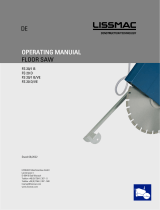 Lissmac FS 20 B D Owner's manual
Lissmac FS 20 B D Owner's manual
-
 Lissmac UNICUT 500 Owner's manual
Lissmac UNICUT 500 Owner's manual
-
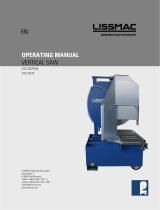 Lissmac DTS 420 N / PE-N Owner's manual
Lissmac DTS 420 N / PE-N Owner's manual
-
Husqvarna FS400LV User manual
-
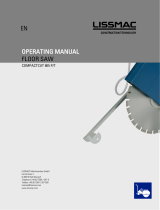 Lissmac COMPACTCUT 905 P/T Owner's manual
Lissmac COMPACTCUT 905 P/T Owner's manual
-
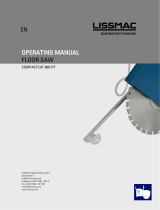 Lissmac COMPACTCUT 900 PT Owner's manual
Lissmac COMPACTCUT 900 PT Owner's manual
-
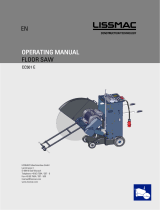 Lissmac CC501 E Owner's manual
Lissmac CC501 E Owner's manual
-
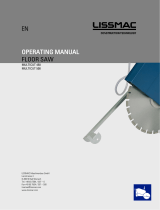 Lissmac MULTICUT 450 / 500 Owner's manual
Lissmac MULTICUT 450 / 500 Owner's manual
























































